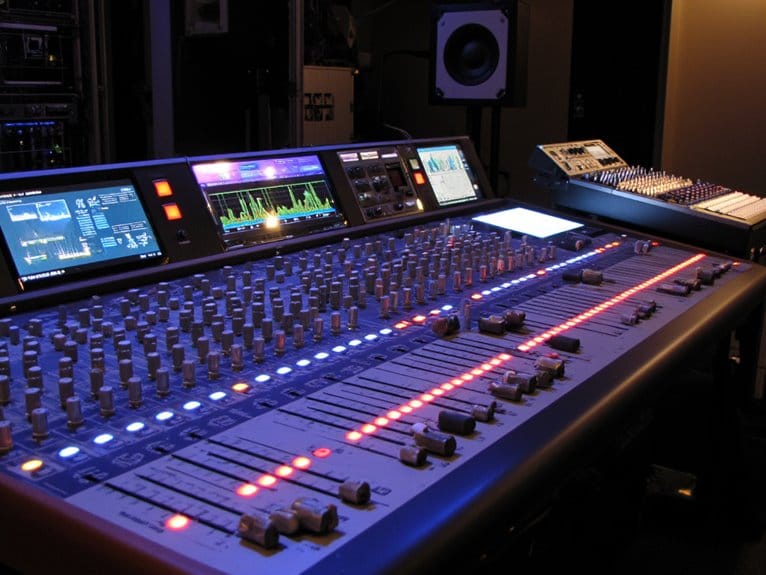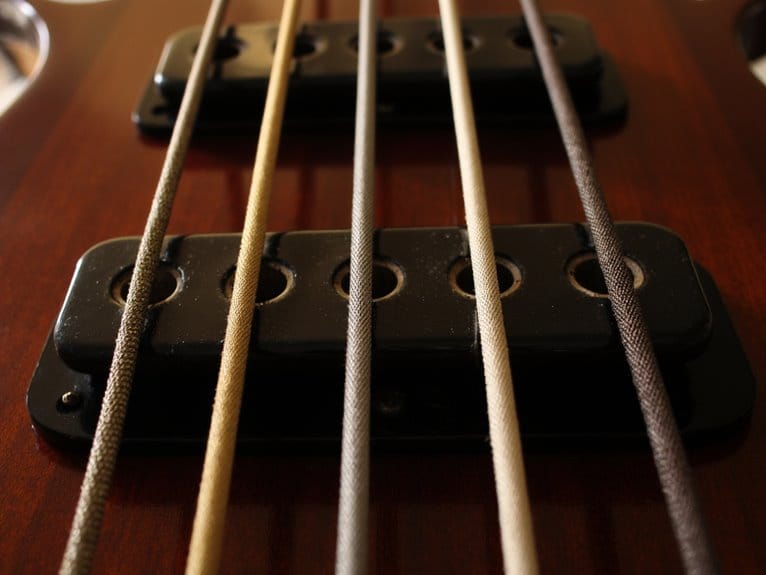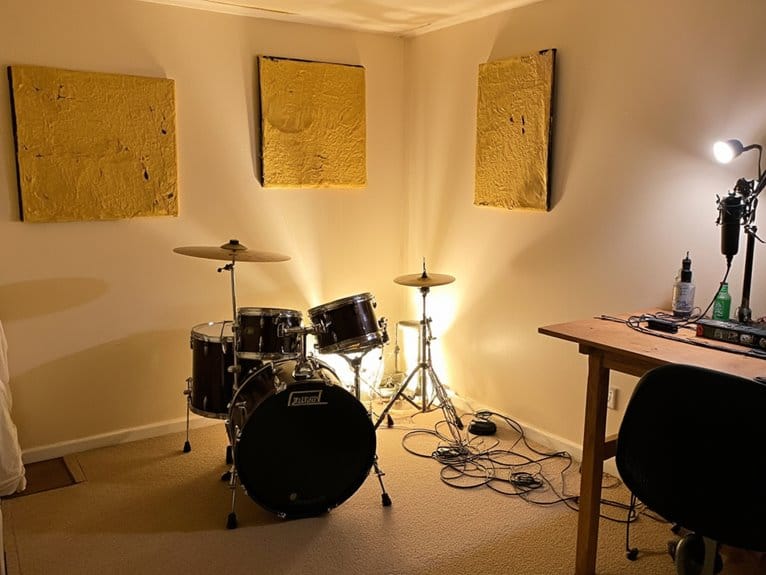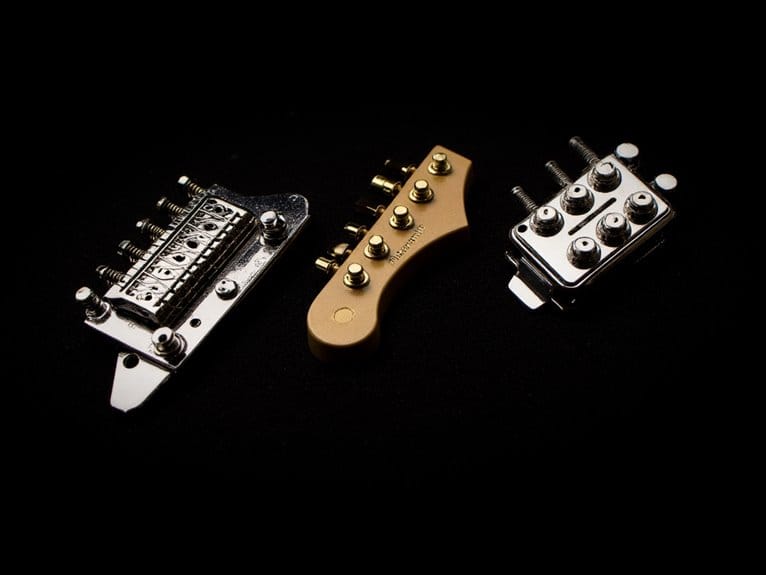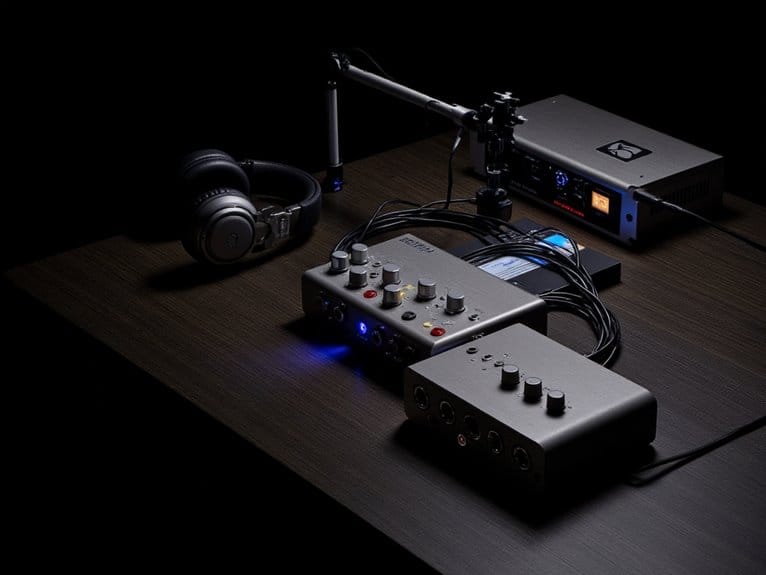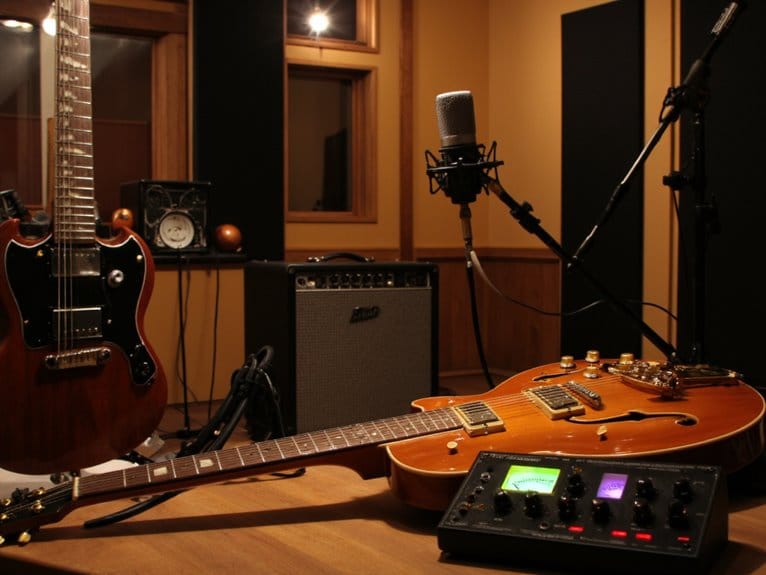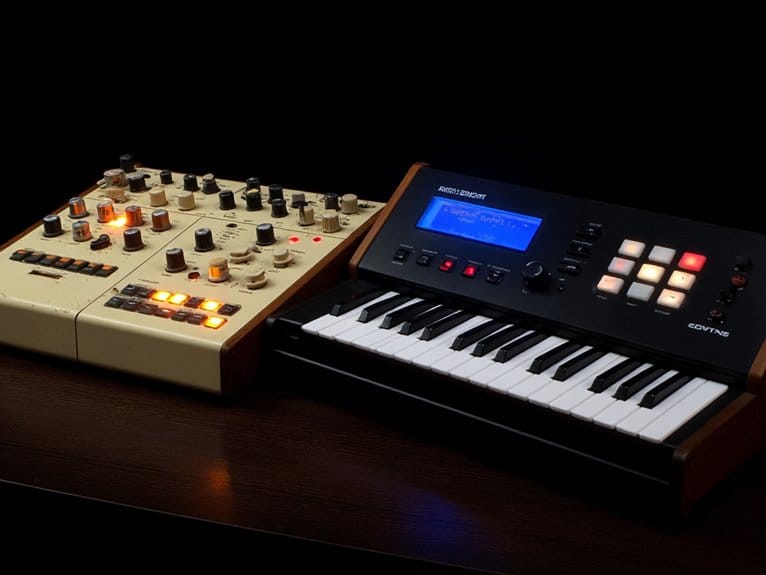Mixing Consoles and Digital Mixers: What You Need to Know
You’ll need to choose between analog mixers that process continuous electrical signals through dedicated circuitry, or digital mixers that convert audio into numerical data for DSP processing. Analog consoles offer tactile controls and natural warmth but lack built-in effects, while digital systems provide scene recall, extensive effects processing, and compact designs ranging from $2,000 to $5,000+. Digital mixers excel in DAW integration with up to 32 USB channels, though they require menu navigation that can slow live performance workflows compared to analog’s immediate fader access. Understanding these fundamental differences will help you navigate the specific capabilities that matter most for your audio applications.
We are supported by our audience. When you purchase through links on our site, we may earn an affiliate commission, at no extra cost for you. Learn more.
Notable Insights
- Digital mixers convert analog signals to numerical data for DSP processing, while analog mixers use continuous electrical waveforms.
- Digital mixers offer built-in effects and scene recall capabilities, whereas analog consoles typically require external gear for processing.
- Analog boards provide tactile controls for instant adjustments, while digital mixers use layered menu systems requiring screen navigation.
- Digital mixers are more compact and space-efficient compared to larger analog consoles that can weigh up to 300 pounds.
- Entry-level digital mixers cost $2,000-$3,000, while professional models range $3,000-$5,000+ with advanced features and better specifications.
Understanding the Core Technology Behind Analog and Digital Mixing Systems
The fundamental divide between analog and digital mixing systems isn’t just about old versus new technology, it’s about two completely different philosophies for handling audio signals.
When you’re working with analog mixers, you’re dealing with continuous electrical waveforms that flow through dedicated analog circuitry from input to output, maintaining the signal’s original electrical characteristics throughout the entire path.
Digital mixers, however, convert your incoming analog signals into numerical data, process everything through sophisticated digital algorithms, then convert back to analog for final output. Professional digital systems typically feature DSP processing that enables complex effects like reverb and delay without requiring external hardware.
Digital mixers transform your analog audio into numbers, process it through complex algorithms, then convert it back to analog output.
This core architectural difference determines everything else about how these systems operate, from their available features and reliability to their distinctive sound characteristics, making your choice between them fundamentally about which processing philosophy aligns with your specific audio requirements.
Digital mixers excel at real-time processing for live performances where immediate tactile control and low latency adjustments are critical for managing multiple audio sources simultaneously.
Signal Processing Methods: Electrical Vs Digital Data Conversion
While analog and digital mixers might seem like they’re doing the same job from the outside, I can tell you that what’s happening under the hood couldn’t be more different regarding how they actually handle your audio signals.
| Processing Method | Signal Type | Key Characteristics |
|---|---|---|
| Analog | Continuous electrical waveforms | Direct voltage manipulation through resistors, capacitors |
| Digital | Binary data (0s and 1s) | ADC sampling, quantization, software algorithms |
| Hybrid | Both formats | ADC/DAC conversion for mixed-domain operation |
Analog signal advantages include that natural “warmth” from continuous waveform representation, plus you’re avoiding quantization artifacts entirely. However, digital signal disadvantages emerge through potential quantization noise and sampling limitations, though modern high-resolution systems minimize these issues notably while offering precise, non-destructive editing capabilities that analog simply can’t match. When choosing between these processing methods, consider that digital systems typically support 24-bit resolution for superior audio fidelity compared to older analog equipment.
Control Interface Design and User Interaction Differences
When you’re comparing mixing consoles and digital mixers, you’ll immediately notice how their control interfaces create fundamentally different user experiences.
Analog boards offer tactile faders and knobs that respond instantly to your touch, while digital units present layered menu systems that require navigation through multiple screens to access the same functions.
The complexity becomes apparent when you’re trying to make quick adjustments during a live performance, where analog mixers let you grab any control without looking.
But digital mixers might force you to hunt through submenus or press function keys to reach critical parameters.
Your interaction speed and workflow efficiency will largely depend on whether you prefer the immediate physical feedback of traditional controls or you’re comfortable with the more complex, yet feature-rich digital interface systems that modern mixers provide.
Physical Vs Digital Controls
As someone who’s spent countless hours behind both analog boards and digital workstations, I can tell you that the fundamental difference between physical and digital mixing controls isn’t just about knobs versus screens—it’s about how your hands, eyes, and brain work together to shape sound.
Physical consoles deliver that legendary analog warmth through direct electrical signal manipulation, giving you instant tactile feedback and muscle memory advantages that let you adjust multiple channels simultaneously without looking.
Digital mixers offer digital precision through software interfaces, requiring menu navigation and layer switching, though they compensate with motorized faders and recall capabilities.
You’ll find physical controls excel in live environments where simultaneous adjustments matter, while digital systems shine in automation and space efficiency, creating distinctly different workflow experiences.
Understanding proper signal flow becomes even more critical when transitioning between these two control paradigms, as the audio path from input preamps through channel strips to final output destinations requires different navigation approaches in each system.
Beyond the immediate feel of faders and knobs lies another fundamental challenge that separates analog from digital mixing: maneuvering the increasingly complex menu systems that digital consoles demand.
You’ll find yourself navigating multi-layered screens to access functions that analog mixers handle through dedicated physical controls, which admittedly can slow down your workflow until you’ve mastered the interface.
While digital mixers offer customizable layouts and menu shortcuts to streamline operations, they require initial setup knowledge that analog boards simply don’t demand.
Smart navigation tips include utilizing external monitor support for clearer viewing and learning your console’s preset recall functions, though I’ve discovered that even seasoned engineers need time adapting to each manufacturer’s unique menu hierarchy and touchscreen responsiveness patterns.
Modern compact digital mixers like the QSC TouchMix-16 feature intuitive touchscreen interfaces that help bridge the gap between complex functionality and user-friendly operation.
Real-Time Adjustment Access
While maneuvering through digital menus certainly presents its challenges, the real make-or-break difference between analog and digital mixing comes down to how quickly you can grab a control and make adjustments during critical moments.
When you’re handling real time performance situations, analog consoles give you immediate control over every channel parameter through dedicated knobs and faders, eliminating the split-second delays that can derail a live mix.
Digital mixers, despite their advanced capabilities, often require you to navigate through channel banks or access nested menus to reach specific controls, which can slow down your workflow when you need lightning-fast adjustments.
Some digital units compensate by offering assignable controls and quick-access buttons, but they’ll never match the intuitive speed of analog’s one-to-one control mapping.
Built-in Effects Processing Capabilities and Limitations
When you’re comparing digital mixers to analog consoles, one of the most significant differences lies in how each handles effects processing, with digital units offering impressive built-in DSP capabilities that can simultaneously run multiple effects across numerous channels.
You’ll find that modern digital mixers pack serious processing power under the hood, often featuring multi-core processors that can handle everything from basic reverbs and delays to complex pitch correction and multi-band compression without breaking a sweat.
However, if you’re working with an analog console, you’ll need to rely entirely on external outboard gear to achieve the same effects, which means investing in separate reverb units, compressors, and other processors that can quickly fill up your rack space and strain your budget.
Digital Effects Processing Power
Four distinct categories of built-in effects processing define what you’ll find inside today’s digital mixers, and I’ve spent enough time tweaking parameters to know that understanding these capabilities can make or break your mixing workflow.
Modern digital consoles leverage high-performance DSP or FPGA engines running 32-bit/54-bit float-point calculations, which translates to exceptional effects performance across multiple channels simultaneously. You’ll find sampling rates reaching 96 kHz or higher, ensuring your reverbs and delays maintain pristine clarity.
What impressed me most is the processing efficiency—mixers like the TASCAM Sonicview achieve 0.51 ms analog-to-analog latency, making real-time effects manipulation seamless during live performances.
However, remember that DSP resources aren’t infinite; loading too many concurrent effects can impact overall system performance. When experiencing audio dropouts or performance issues, buffer size adjustments may be necessary to optimize your digital mixer’s processing capabilities. Budget mixers like the YAMAHA MG06X offer built-in digital reverb effects that enhance vocal quality without sacrificing the mixer’s compact portability.
Analog External Processing Requirements
Digital mixers excel at internal processing, but analog consoles present a different reality where external processors become your primary tools for sophisticated sound shaping.
You’ll encounter various insert cable types, from separate send/return connections to combined TRS jacks requiring specialized Y cables, and frankly, there’s no universal standard for tip-ring assignments.
While analog processing advantages include that warm, musical character many engineers crave, external gear compatibility demands careful attention to operating levels and impedance matching.
Signal routing challenges multiply when cascading effects, creating effects chaining options that can become surprisingly complex.
Mixer patching techniques require strategic planning, as traditional analog boards lack flexible internal routing, though latency concerns remain minimal compared to digital systems.
Insert points process 100% of the signal in series, making them essential for corrective processing like dynamics and EQ where complete signal commitment is required. Understanding the differences between auxiliary sends and insert points becomes crucial, as sends operate in parallel while inserts interrupt the entire signal path.
Scene Recall and Mix Storage Functionality
Although many engineers initially find scene recall intimidating, I’ve discovered it’s one of the most powerful features that separates digital consoles from their analog predecessors. It allows you to store complete mix snapshots with surgical precision and recall them instantly during live performances.
Through effective scene management, you’ll transform between songs without frantically adjusting dozens of parameters manually, storing entire mix settings with digital accuracy that analog boards simply can’t match.
Digital scene management eliminates the chaos of manual parameter adjustments, delivering precision that analog consoles can’t achieve.
The real magic lies in recall flexibility through features like Recall Safe, which locks critical parameters like mic gain during scene changes, and Focus Recall, enabling selective parameter updates without affecting your entire mix.
You can even create partial recalls and mute scenes for complex performances, balancing safety with the creative freedom to make manual adjustments after each recall.
Digital Audio Workstation Integration Options
When you’re ready to bridge the gap between your digital mixer and computer-based recording, I’ve found that modern DAW integration options offer unprecedented flexibility that transforms how you approach both live performance and studio work.
USB channels typically support up to 32 concurrent audio streams, providing exceptional recording flexibility for complex sessions. MIDI mapping capabilities let you assign physical faders and knobs to software parameters, fundamentally turning your mixer into sophisticated control surfaces.
Routing matrices within both hardware and software give you granular signal flow management, while proper latency management through buffer optimization maintains sound quality during real-time processing. Quality interfaces minimize latency delays during recording and playback, ensuring synchronized audio performance.
DAW compatibility varies considerably between manufacturers, so I always verify specific integration features before committing to any particular ecosystem. Many professional interfaces now support 24-bit/192kHz resolution recording, ensuring studio-grade audio quality throughout your entire signal chain.
Cost Analysis: Entry-Level Vs Professional Equipment
The financial landscape between entry-level and professional mixing equipment reveals stark differences that I’ve witnessed firsthand, where your initial investment directly correlates with long-term capabilities, workflow efficiency, and sonic quality.
Entry-level digital mixers, ranging from $2,000 to $3,000, offer compelling digital mixer benefits like built-in DSP effects, USB interfaces, and essential DAW integration that analog consoles can’t match without additional outboard gear.
Entry-level digital mixers deliver built-in DSP effects and DAW integration that analog consoles simply cannot match without costly additional gear.
However, entry level limitations become apparent in demanding scenarios, where you’ll miss advanced recall capabilities, premium microphone preamps, and extensive I/O options.
Professional units, costing $3,000 to $5,000+, deliver motorized faders, color touchscreens, and expandable networking that justify their steeper prices through enhanced workflow efficiency and long-term scalability.
Quality specifications matter significantly, as professional mixers typically feature 24-bit/192kHz resolution and dynamic ranges exceeding 106dB to prevent distortion during critical recording and mixing applications.
The transition from analog to digital continues evolving, with digital technologies becoming increasingly standard as manufacturers integrate more sophisticated processing capabilities into live sound equipment.
Physical Space Requirements and System Footprint
Beyond the financial considerations that shape your equipment decisions, physical workspace constraints often determine which mixing solution you can actually implement in your studio or venue.
Digital mixers excel at space optimization, with models like the DiGiCo S21 measuring just 30″ x 23″ x 12″ and weighing 42 pounds, compared to analog consoles that can stretch 52″ wide and weigh 300 pounds.
You’ll find that digital units integrate multiple I/O connections, touchscreen interfaces, and expandable option slots within compact chassis designs, eliminating the need for extensive outboard gear racks.
This streamlined approach proves invaluable when dealing with venue constraints, whether you’re working in cramped broadcast booths, mobile rigs, or clubs where every square foot matters for both functionality and safety.
Noise Resistance and Signal Quality Considerations
While physical constraints might dictate which mixer fits in your space, signal quality and noise performance will ultimately determine whether your audio sounds professional or amateur.
Digital mixers excel at signal integrity maintenance through their inherent immunity to electromagnetic interference during transmission. Unlike analog mixers, which suffer from ground loops and induced noise over longer cable runs, digital systems maintain pristine audio quality regardless of venue size.
| Aspect | Digital Advantage |
|---|---|
| Noise Floor | -70 to -81 dBu typical performance |
| Dynamic Range | 100+ dB in optimized systems |
| EMI Resistance | Built-in digital transmission immunity |
| Processing Quality | 40-bit floating-point with reduced distortion |
Professional noise mitigation strategies include proper gain structure optimization and external shielding in high-EMI environments, though digital mixers require considerably less intervention than their analog counterparts. Quality mixers should feature preamps with signal-to-noise ratios of 70 dB or higher to minimize unwanted hiss and maintain professional audio standards. Advanced models incorporate studio-quality preamps like discrete class-A designs that further enhance audio fidelity through improved frequency response and reduced noise characteristics.
Learning Curve and Technical Skill Requirements
Superior signal quality means nothing if you can’t actually operate your mixer effectively, and here’s where digital and analog systems diverge dramatically in their demands on your technical expertise.
Digital mixers present a notably steeper learning curve, requiring knowledge of digital signal processing, software navigation, and network configuration skills that frankly overwhelm many beginners. You’ll need different learning methods compared to analog systems, since each digital model operates uniquely, forcing you to master touchscreen interfaces, preset management, and virtual signal routing.
Analog mixers offer intuitive, straightforward designs with direct tactile feedback that beginners grasp quickly. While digital systems demand extensive technical knowledge and formal training, analog mixers require only basic signal flow understanding and manual operation skills.
Live Event Applications and Venue Suitability
When you’re dealing with live events, the venue itself becomes your most demanding critic. I’ve learned that choosing between digital and analog mixers often comes down to reading the room—literally.
Live event optimization hinges on matching your console to the space’s unique demands, though venue differentiation isn’t always straightforward.
Successful live sound engineering requires carefully aligning your mixing console choice with each venue’s specific acoustic and operational challenges.
Large venues demand digital powerhouses like the Soundcraft Vi7000, which handles up to 128 inputs for complex, multi-source arrangements. Small to medium spaces often thrive with analog simplicity—the Yamaha MG16XU provides sufficient control without overwhelming operators.
Consider these critical venue factors:
- Channel requirements – Multiple performers need extensive input capacity
- Portability needs – Quick setup venues favor compact, lightweight consoles
- Acoustic challenges – Digital mixers offer real-time room tuning capabilities
- Environmental conditions – Outdoor events require rugged, weather-resistant construction
Digital mixers introduce 1-10ms latency during analog-to-digital conversion, which can affect timing-sensitive live performances.
Studio Recording and Production Workflows
When you’re setting up your studio recording workflow, digital mixers offer seamless DAW integration that I’ve found eliminates the traditional bottlenecks between analog mixing and digital recording, allowing you to route multiple channels directly into your computer while maintaining real-time control over levels, EQ, and effects.
Your multitrack recording capabilities expand dramatically with modern digital consoles, since they can simultaneously capture 16, 32, or even 64 individual tracks directly to your DAW without requiring additional audio interfaces or complex routing configurations.
I’ll admit that the learning curve can feel steep initially, but once you understand how these mixers communicate with your recording software through USB or Ethernet connections, you’ll discover that your entire production process becomes more streamlined and professional. Digital mixers also provide saved settings capabilities that allow you to store and recall your preferred configurations, significantly streamlining your workflow between different recording sessions.
For optimal performance in your studio setup, pairing your digital mixer with a dedicated audio interface ensures ultra-low latency monitoring and maintains the highest audio quality throughout your signal chain.
DAW Integration Benefits
Since I’ve spent countless hours wrestling with complex studio setups that seemed designed to test my patience rather than enhance my creativity, I can confidently say that DAW integration with digital mixers represents one of the most significant workflow improvements in modern recording.
The DAW advantages you’ll experience include instant session recall, unlimited buses and channels, and seamless automation capabilities that dramatically boost studio productivity.
Here’s what makes this integration genuinely transformative:
- Instant recall of sessions eliminates setup delays between projects
- Remote control via hardware controllers provides tactile mixing without mouse dependency
- Central hub management reduces cable clutter and patching complexity
- Hybrid workflows combine digital precision with analog warmth effectively
You’ll find that automation data stores perfectly within project files, ensuring exact mix replication during revisions while maintaining non-destructive editing capabilities.
Modern digital mixers with built-in DSP effects and USB connectivity enable direct recording into your DAW while simultaneously providing real-time processing and monitoring capabilities. Unlike built-in sound cards that often plague recordings with noticeable delays, integrated digital mixers provide low-latency monitoring essential for maintaining natural timing during overdubs and multi-track sessions.
Multitrack Recording Capabilities
Beyond the convenience of DAW integration, multitrack recording capabilities represent the true test of any mixing console’s studio worthiness, and I’ve learned through countless recording sessions that the approach differs dramatically between digital and analog platforms.
Digital mixers typically offer built-in USB multitrack recording options, capturing 16+ channels at 24-bit/48kHz directly to your computer without additional interfaces. You’ll find this streamlines mixing workflow efficiency considerably compared to analog consoles, which require external audio interfaces and manual routing for each channel.
I’ve discovered that devices like the TASCAM Model 24 bridge this gap effectively, functioning as mixer, recorder, and interface simultaneously.
While analog setups demand more cabling expertise, they often provide that coveted warmth many producers still chase.
Input and Output Expansion Possibilities
While I’ve spent countless hours behind mixing boards of every size imaginable, I can tell you that one of the most exciting developments in modern digital mixers isn’t necessarily what’s built into the console itself, but rather how dramatically you can expand their capabilities through various input and output options.
Modern mixers deliver exceptional input compatibility through combo jacks supporting both XLR and TRS connections, while output flexibility comes from multiple buses and monitor sends.
Here’s what you should consider:
- Digital snake systems like Clark Technic DN32 enable significant input increases
- USB expansion cards provide 32×32 channel computer connectivity
- AES50 networking supports remote stage-box connections across larger venues
- Mix buses offer up to 25 independent output feeds for complex routing
External Equipment Dependencies and Compatibility
When you’re building a professional mixing setup, you’ll quickly discover that your digital mixer’s built-in processing capabilities, while impressive, often need reinforcement from external analog gear like compressors and equalizers to achieve that warm, musical character that seasoned engineers crave.
I’ve found that the real magic happens when you can seamlessly route signals between your digital console and outboard processors, though this integration requires careful attention to signal levels, impedance matching, and proper cabling to maintain audio quality throughout the chain.
Your mixer’s digital integration capabilities, including features like insert points, auxiliary sends, and direct outputs, will ultimately determine how effectively you can incorporate external equipment into your workflow without introducing noise, latency, or phase issues.
Analog External Processing Requirements
Integrating external processors with analog mixing consoles demands careful attention to connection methods, signal routing, and compatibility requirements that can make or break your audio setup.
Most analog consoles offer insert jack configurations that allow real-time monitoring options through your mixer’s channel strip, though you’ll encounter both separate send/return jacks and combined TRS configurations requiring specialized cables.
When configuring your system, I’ve found these considerations essential for maintaining signal integrity maintenance:
- Verify impedance matching practices between your mixer’s outputs and processor inputs
- Plan cable length considerations carefully, keeping unbalanced runs under 15 feet
- Configure effects loop management for stereo returns when necessary
- Test processor input compatibility to prevent distortion or noise issues
While cascading processor setups offer creative possibilities, they introduce routing flexibility challenges that require careful planning to avoid reconnection headaches during performances.
Digital Integration Capabilities
Digital mixers fundamentally reshape how you’ll connect and control external equipment, moving beyond the physical limitations that define analog console workflows.
Through digital networking protocols like Dante and AVB, you’ll transmit multiple audio channels over single Ethernet cables, dramatically simplifying your stage setup while enabling sophisticated audio routing between consoles, stage boxes, and recording devices.
This integration extends to DAW connectivity, where USB or network interfaces let you multitrack record while maintaining real-time mixer control over channel processing and effects.
You’ll find that internal rerouting capabilities eliminate physical patching needs, while remote control via computers and mobile devices provides unprecedented flexibility in managing complex audio systems across multiple venues.
Future-Proofing Your Sound System Investment
Although the audio industry’s projected growth from $25 billion to $40 billion by 2032 might seem like just another set of impressive statistics, I’ve learned that these numbers actually represent a fundamental shift in how we should approach sound system investments today.
When I evaluate future proof technology options, I focus on four critical elements that determine sound system longevity:
- AI integration and voice control capabilities for seamless smart home compatibility
- Wireless connectivity with multi-room audio management to accommodate streaming platforms
- Modular design allowing hardware upgrades without complete system replacement
- High-resolution audio support meeting the premium market’s 12.3% annual growth demands
The key isn’t chasing every trend, but selecting systems that adapt to technological evolution while maintaining core functionality.
Frequently Asked Questions
Can I Mix Analog and Digital Components in the Same Audio System?
You can absolutely achieve analog integration with digital compatibility in your audio system, though I’ve learned it requires careful attention to signal levels and proper interfacing.
You’ll need quality audio interfaces with appropriate connectors like XLR, TRS, or USB to bridge both domains effectively.
The key is matching signal levels between dBu analog measurements and dBFS digital references, while maintaining clean gain staging throughout your entire signal chain for ideal performance.
How Often Do Digital Mixers Require Firmware Updates and Maintenance?
You’ll find that firmware frequency for digital mixers typically runs two to four major updates annually, though I’ve seen manufacturers like Behringer and Yamaha push critical patches more frequently when needed.
The maintenance importance can’t be overstated—these updates deliver new features, fix stability issues, and guarantee compatibility with interface cards.
What Backup Options Exist if My Digital Mixer Fails During Performance?
Your backup strategies should include dual microphones routed to DCA groups, plus a compact analog mixer on standby for critical inputs.
I’d recommend saving multiple mixer scenes for instant recall, keeping backup files on USB drives, and using redundant input cards with failover capabilities.
These redundancy options, combined with multitrack recording systems and manual patch bay rerouting, guarantee you’ll maintain audio continuity even during complete digital mixer failure.
Are There Power Consumption Differences Between Analog and Digital Mixing Consoles?
Yes, you’ll notice significant power efficiency differences between these console types, with analog mixers typically consuming 20-50 watts compared to digital mixers’ 50-200 watts.
Digital units require more energy usage due to their DSP processors, microprocessors, and LCD displays that constantly operate. While I’ve found analog consoles more energy-efficient, digital mixers still offer better efficiency than separate powered amplifiers.
Can Older Analog Equipment Connect Properly to Modern Digital Mixing Systems?
You’ll find that analog compatibility with modern digital systems works well, though it requires careful planning and additional hardware.
Signal conversion through quality A/D converters, DI boxes, or digital stage snakes guarantees proper level matching and maintains audio integrity.
I’ve seen many studios successfully bridge older analog gear with digital mixers using these methods, preserving that warm analog character while gaining digital flexibility and recall capabilities.
On a final note
You’ll need to weigh your specific requirements against budget constraints, workflow preferences, and technical demands when choosing between analog and digital mixing solutions. While digital mixers offer superior recall capabilities, extensive effects processing, and future-proof connectivity options, analog consoles provide that distinctive warmth, tactile control experience, and immediate sonic character that many engineers still prefer. Consider your primary applications, expansion needs, and long-term investment strategy.

